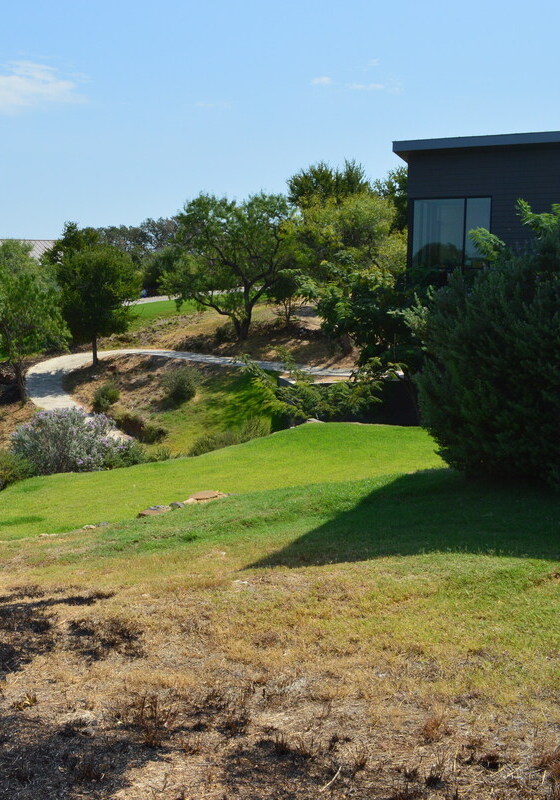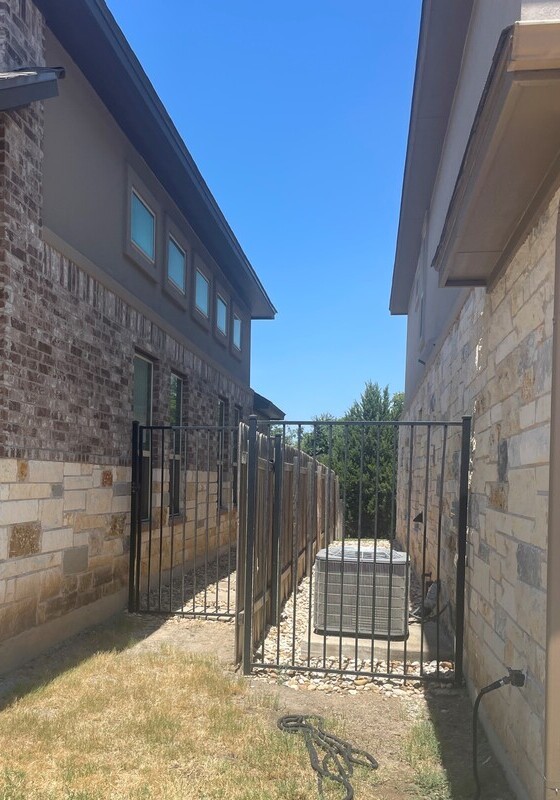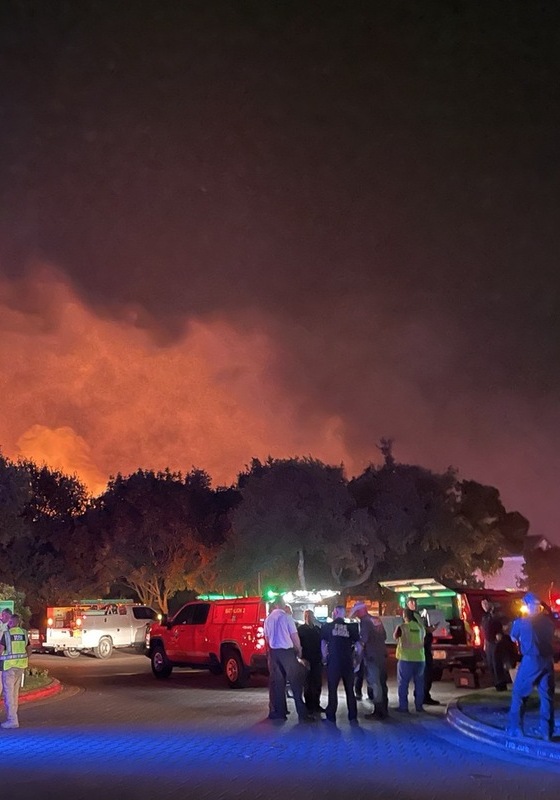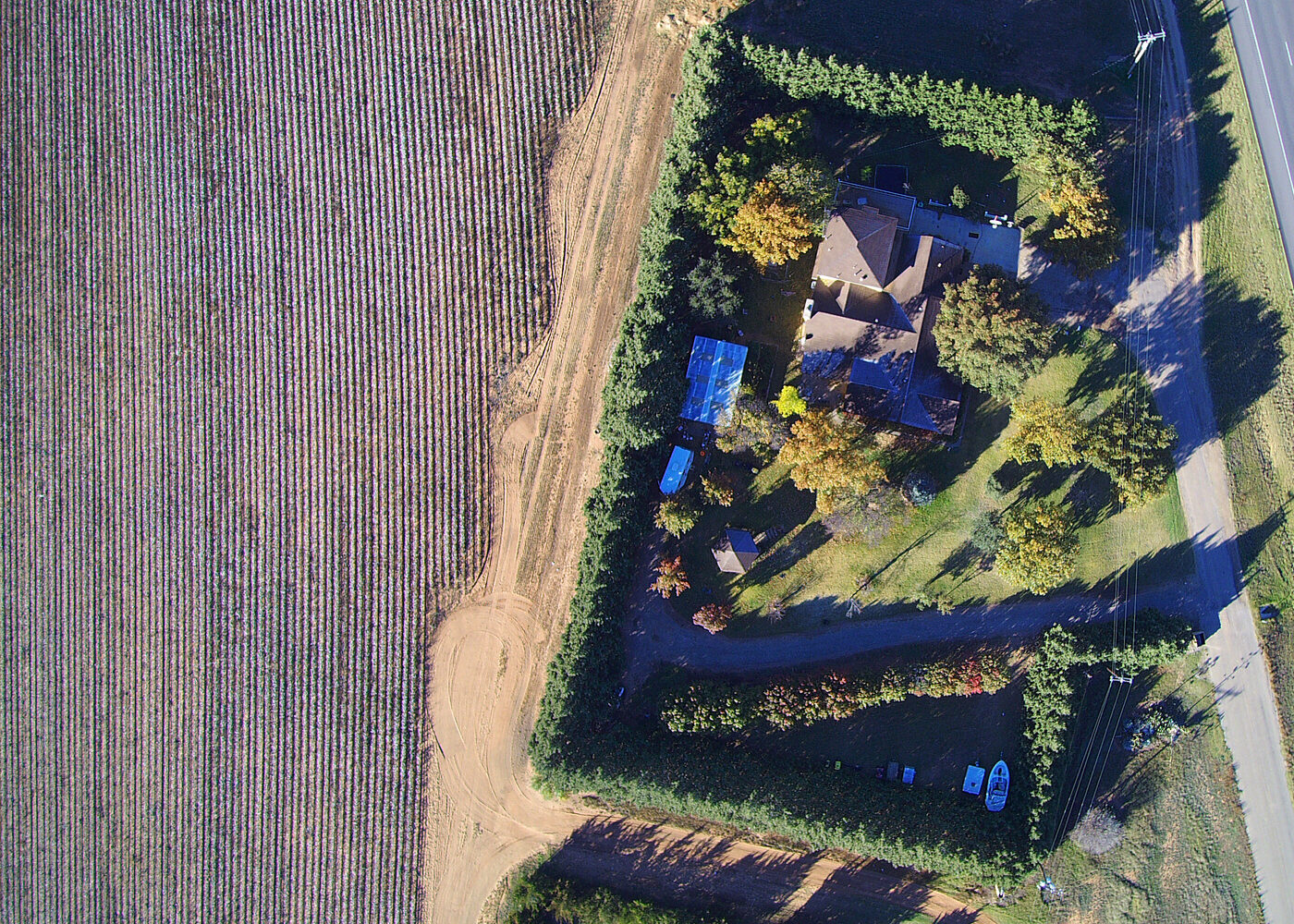Embers
Embers are flaming bits of debris coming from the fire that can travel one to two miles in certain weather conditions. If a large enough ember or several embers gather on flammable materials, a spot fire can occur on or near your home or structure.
Embers can pose one of the greatest threats to a home, sometimes more than the approaching wildfire. A high intensity fire can produce a literal blizzard of embers, sometimes traveling more than a mile before landing. They can find the smallest nooks and ignite a wildfire.
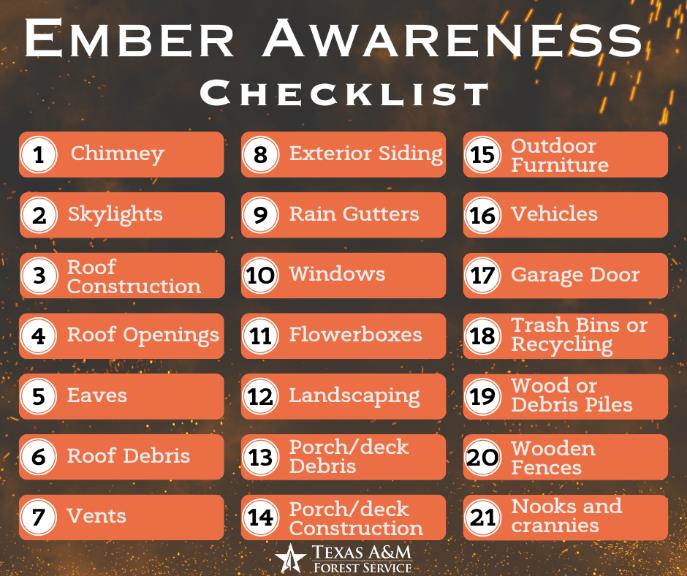
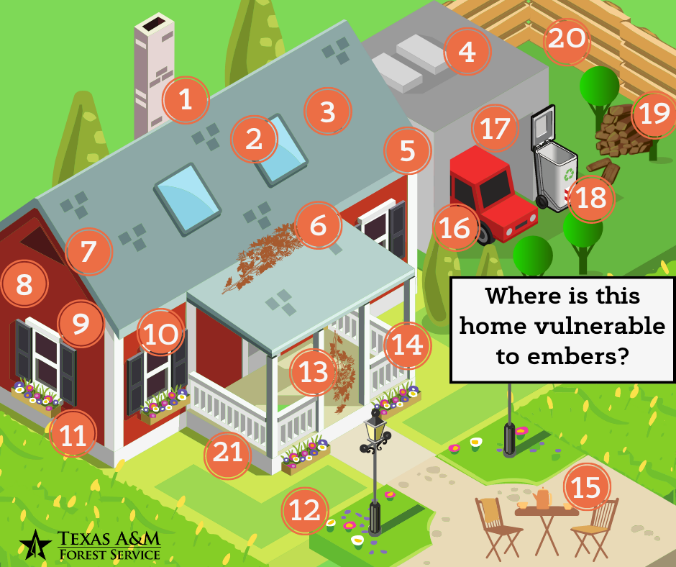
Take action to harden your home against embers
- Chimney – Keep chimneys well maintained and install an approved spark arrestor.
- Skylights – Ensure skylights are double-paned glass with one as tempered glass. Close skylights if a wildfire is nearby.
- Roof construction – Roofs should be constructed with Class A fire-rated materials such as composite shingles, metal, concrete, or clay tile.
- Roof openings – Use non-combustible materials or mesh screening to cover or plug any roof openings. Replace or repair damaged roofing materials as soon as possible.
- Eaves – Close or box in eaves but provide ventilation to prevent condensation and mildew. Use mesh screening no larger than 1/8 inch for any eave vents.
- Roof debris – Routinely inspect and remove vegetative debris from the roof. Consider trimming overhead tree branches to avoid the accumulation of dead leaves.
- Vents – Install mesh screening no larger than 1/8 inch for any exterior vents such as attic, eave, or foundation vents.
- Exterior siding – Use fire-resistant siding such as brick, fiber-cement, plaster, or stucco. Inspect structure siding for damage and repair or replace as needed.
- Rain gutters – Routinely inspect and clean gutters of debris. Branches, leaves, and pine needles can get trapped in gutters. Consider using gutter covers to reduce the amount of debris that gets trapped.
- Windows – Use double or multi-paned windows with tempered glass. Avoid single-pane, non-tempered glass windows. Avoid planting shrubs or other plants under or close to windows.
- Flowerboxes – Flowerboxes positioned underneath windows could allow embers to collect and ignite. Remove flowerboxes and avoid placing flammable vegetation within the first five feet of your home.
- Landscaping – Use fire-resistant landscaping principles and allow for defensible space when planning the landscaping around your home.
- Porch and deck debris – Clean off vegetative debris that accumulates on the porch or deck regularly. Also note any flammable materials that should be removed if a wildfire is nearby such as door mats, propane tanks, or newspapers.
- Porch and deck construction – If possible, use fire resistant construction materials to build the deck or porch. Screen the bottom with 1/8 inch metal screening. Spread gravel or other non-combustible material under and around the deck. Do not store flammable materials under decks or porches.
- Outdoor furniture – If outdoor furniture is combustible, move it into the house or garage when a wildfire is nearby.
- Vehicles – Park vehicles away from the house or in a garage with the garage door closed if a wildfire is nearby and the vehicle is not being used for evacuation. Close vehicle windows. Follow local officials for evacuation guidance and evacuate early if possible.
- Garage door – Ensure there are no gaps in the garage doors or frame that would allow embers to be drafted inside. Close the garage door if a wildfire is nearby.
- Trash bins or recycling – Keep trash cans and recycling bins covered.
- Wood or debris piles -Firewood should be stored at least 30 feet away from the home. Haul away debris piles as soon as possible, or if outdoor burning is intended, conduct it safely following safe debris burning recommendations and local regulations.
- Wooden fences – Consider installing a metal gate or portion of metal fence at least five feet to provide a buffer between the wooden fence and the house. Keep the fence in good condition.
- Nooks and crannies – Conduct a walk around the house and note any corners and nooks where leaves or other vegetation have collected such as around air conditioner units or inlets of the house. These are the same spots embers could collect. Keep these areas clean and free of vegetative debris.
